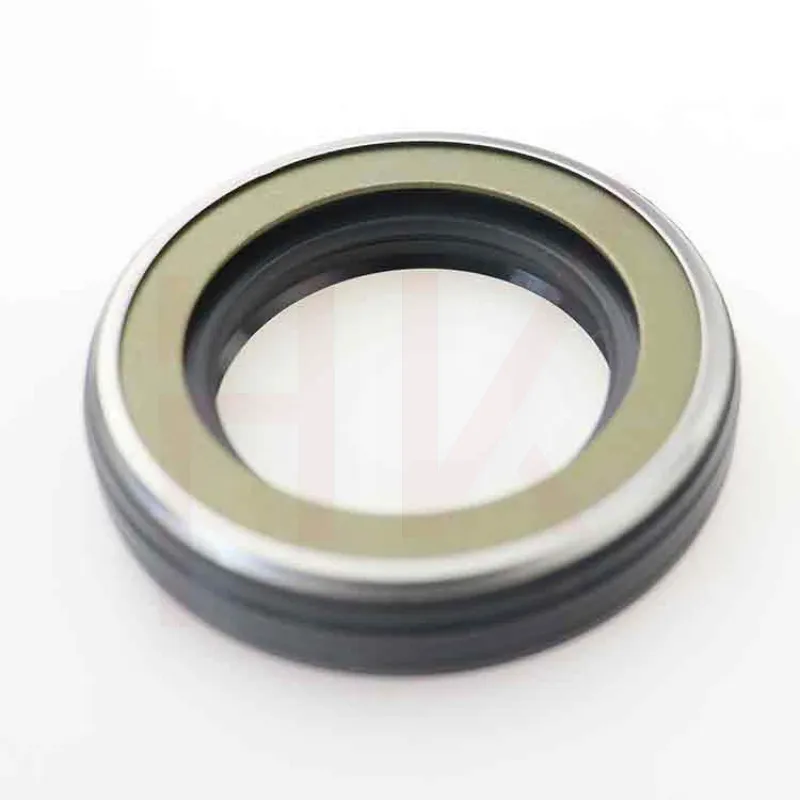کانونی یەکەم . 07, 2024 06:58 Back to list
dust seal vs oil seal
Dust Seal vs Oil Seal Understanding the Differences and Applications
In the realm of machinery and equipment maintenance, seals play a crucial role in ensuring optimal performance, longevity, and reliability. Among the various types of seals used in mechanical systems, dust seals and oil seals are two prominent types, each designed to serve specific functions. While both types of seals aim to protect internal components from external contaminants and retain essential fluids, they do so in fundamentally different ways. Understanding the differences between dust seals and oil seals is essential for selecting the appropriate seal for a given application.
Dust Seals Overview and Functionality
Dust seals, as the name implies, are designed primarily to prevent dust, dirt, and other particulate matter from entering a housing or mechanical assembly. They are particularly important in environments where dust exposure is prevalent, such as construction sites, industrial facilities, and outdoor machinery. Dust seals are typically made from flexible materials such as rubber, polyurethane, or neoprene, allowing them to conform to the surface they are sealing against.
The primary function of a dust seal is to provide a barrier that prevents contaminants from entering moving parts, thus reducing wear and tear and extending the life of the machinery. In many cases, dust seals are employed in conjunction with other seals, such as oil seals, to provide comprehensive protection against both solid and liquid contaminants. In applications like wheel bearings and hydraulic cylinders, dust seals protect the internal components from abrasive particles while allowing the primary seal to handle fluid retention.
Oil Seals Overview and Functionality
Oil seals, on the other hand, have a different primary purpose. They are designed to retain lubricating oils or fluids within a mechanical system, preventing leakage and ensuring that critical components remain lubricated for optimal performance. Oil seals are commonly found in applications such as engines, transmissions, and pumps.
Oil seals are often constructed from similar materials as dust seals, such as rubber or elastomers, but they feature a more complex design. Most oil seals incorporate a metal casing, which provides structural support and helps maintain the seal’s integrity under pressure. The sealing lip, which comes into contact with the shaft or housing, is engineered to create a tight seal that minimizes fluid leakage while also allowing for some movement.
An essential aspect of oil seals is their ability to withstand varying pressures and temperatures, making them suitable for high-performance applications. As oils and lubricants operate in environments with high heat and mechanical stress, oil seals must possess durability and flexibility to function effectively.
dust seal vs oil seal

Key Differences
While both dust seals and oil seals aim to protect machinery and enhance its longevity, their primary functions diverge significantly. Dust seals focus on preventing particulate contamination, whereas oil seals are concerned with retaining lubricating fluids.
Furthermore, construction differences are notable. Dust seals are typically simpler in design and may not have the same pressure-resistant features as oil seals. In contrast, oil seals feature more robust construction with a metal casing and a precision-engineered lip to handle fluid retention.
Applications in Industry
In practical applications, the choice between a dust seal and an oil seal is determined by the specific requirements of the equipment in question. For example, in a hydraulic cylinder exposed to outdoor environments, both a dust seal and an oil seal will be employed together. The dust seal will shield the inner components from debris, while the oil seal retains hydraulic fluid, preventing leaks that could lead to significant operational issues.
On the other hand, in a completely enclosed system where dust intrusion is minimal, an oil seal may be sufficient. For instance, in automotive engines, oil seals are vital to ensure proper lubrication without the influence of external contaminants affecting performance.
Conclusion
In summary, both dust seals and oil seals are indispensable components in mechanical systems, each serving distinct yet complementary roles in protecting and maintaining equipment. By understanding the specific functions, construction features, and applications of each type of seal, engineers and maintenance professionals can make informed decisions that enhance the performance and lifespan of machinery. Proper selection and maintenance of these seals will ultimately lead to improved operational efficiency, reduced downtime, and lower maintenance costs. Whether you are working with industrial machinery, automotive applications, or any other mechanical systems, recognizing the differences between dust seals and oil seals is key to ensuring reliable performance.
-
TCN Oil Seal Metal Ring Reinforcement for Heavy Machinery
NewsJul.25,2025
-
Rotary Lip Seal Spring-Loaded Design for High-Speed Applications
NewsJul.25,2025
-
Hydraulic Cylinder Seals Polyurethane Material for High-Impact Jobs
NewsJul.25,2025
-
High Pressure Oil Seal Polyurethane Coating Wear Resistance
NewsJul.25,2025
-
Dust Proof Seal Double Lip Design for Construction Equipment
NewsJul.25,2025
-
Hub Seal Polyurethane Wear Resistance in Agricultural Vehicles
NewsJul.25,2025
-
The Trans-formative Journey of Wheel Hub Oil Seals
NewsJun.06,2025
Products categories
















